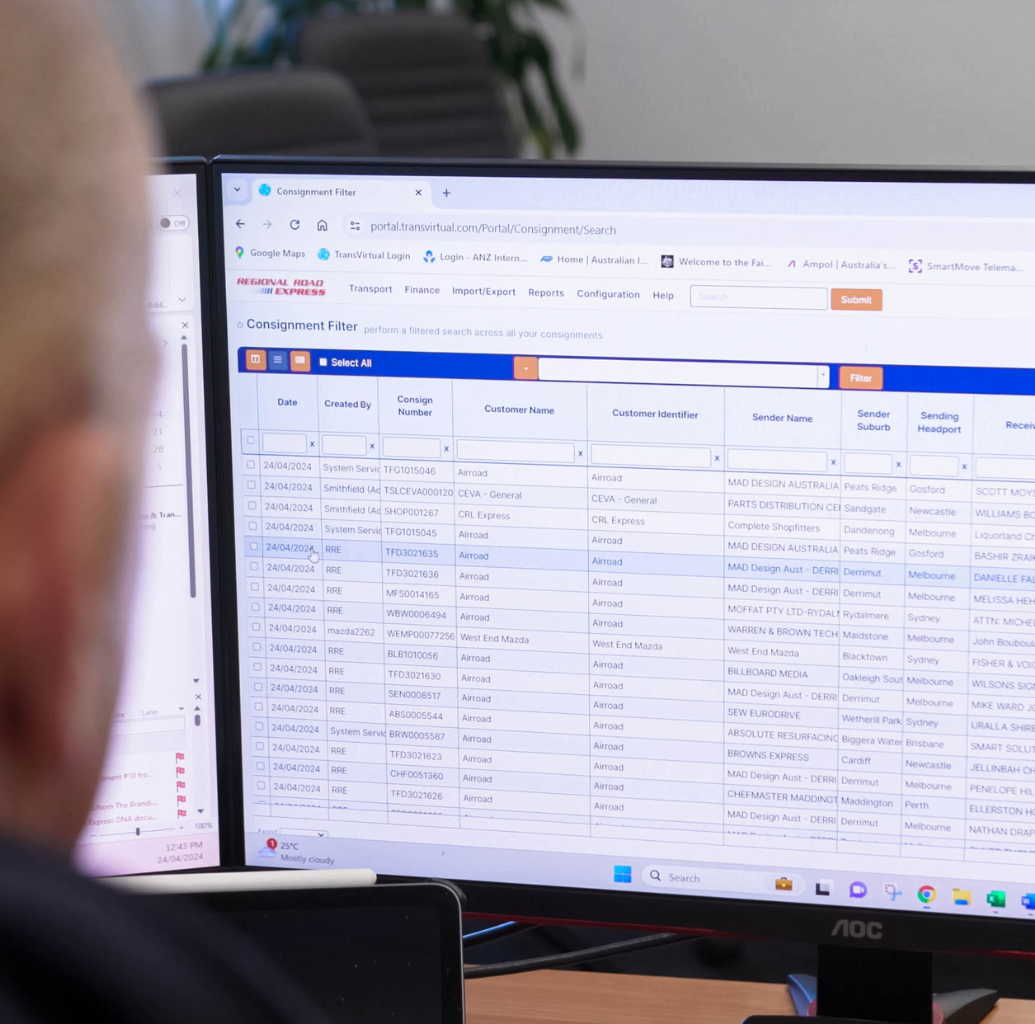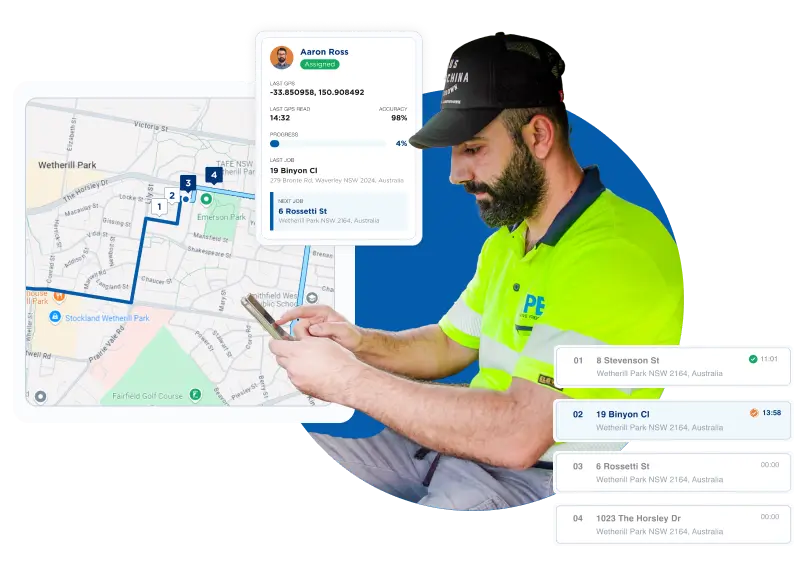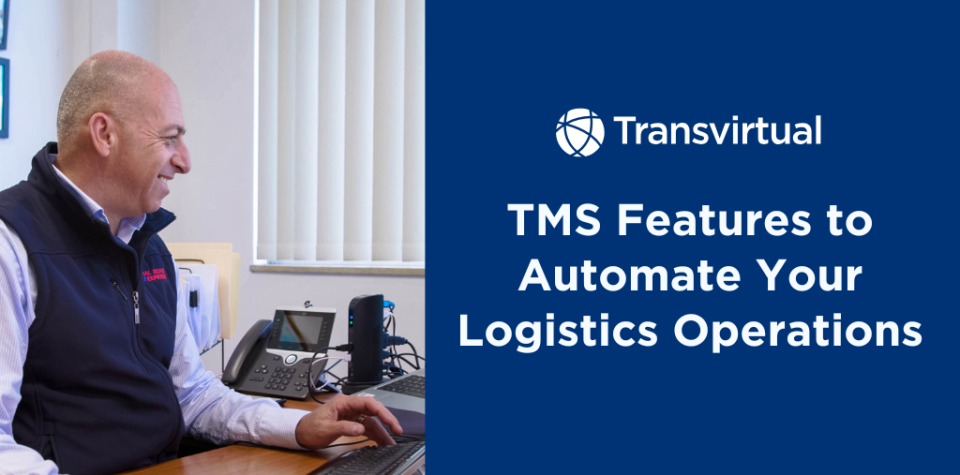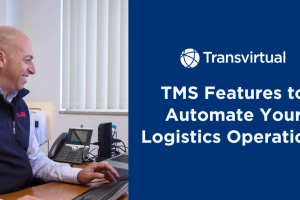Automation in logistics has moved from “nice to have” to absolutely essential. You’re likely facing tighter delivery windows, higher customer expectations and rising costs if your operations rely heavily on manual processes, you’re vulnerable. Automation in logistics not only drives cost savings, but also improves speed and accuracy.
A key player enabling this shift is a Transport Management System (TMS). Think of a TMS as the command center for your transport and freight operations. It automates tasks that used to eat hours of human time, connects your drivers, vehicles, loads and customers, and serves up real-time data, so you’re always in control.
Best TMS Features for Seamless Automation
Smart Route Optimization
A TMS automatically calculates the fastest and most cost-efficient delivery routes in seconds. It reduces fuel consumption, cuts delivery delays, and adapts to real-time changes like traffic, weather, or urgent re-routes. No manual map-checking needed.
Automated Dispatch and Load Allocation
Instead of planners assigning jobs manually, the system auto-allocates deliveries to the most suitable driver or vehicle based on location, availability, and capacity. This eliminates human error, speeds up dispatching, and increases fleet productivity.
Real-Time Tracking and Shipment Updates
You can see where every vehicle and shipment is at any moment. The TMS sends automatic updates to customers and dispatch teams, reducing phone calls, follow-ups, and uncertainty.
Electronic Proof of Delivery
Drivers can capture signatures, photos, and delivery notes digitally. These are synced instantly to the back office, so there’s no lost paperwork, no manual data entry, and fewer delays in invoicing.
Automated Invoicing and Billing
Once a delivery is complete, invoices are generated automatically. This improves cash flow, reduces billing delays, and minimizes mistakes caused by manual processing.
System Integration
A good TMS integrates with warehouse systems, accounting software, ERPs, and other tools you already use. This creates smooth data flow, removes double-handling, and ensures all departments work from the same information.
Without Automation vs. With Automation
| Before | After (with Transvirtual TMS) |
|---|---|
| Routes manually planned, time-consuming, and prone to errors | Smart route optimization automatically finds the fastest and most efficient paths |
| Jobs assigned through phone calls, spreadsheets, or guesswork | Automated dispatch instantly allocates jobs to the best driver or vehicle |
| Constant phone calls and emails to check delivery status | Real-time tracking provides live updates and automatic notifications for customers |
| Paper-based forms and proof of delivery that get lost or delayed | Electronic POD instantly uploads signatures, photos, and notes to the system |
| Manual invoicing entry, delayed invoices, and billing errors | Quick, accurate, auto-generated invoices created upon delivery completion |
| No data visibility, scattered spreadsheets, and difficult-to-analyze reports | Reliable automated reports on costs, performance, and delivery times |
| High operational costs from excess fuel use, admin labor, and delivery delays | Lower operational costs through improved efficiency and fewer mistakes |
Why Our Clients Love Transvirtual TMS

"Transvirtual has helped (improve) our visibility, so from the moment the data hits our system, to the moment we scan a consignment, to the moment our agent scans our consignment, and then at the end of the day our client gets to see exactly where that consignment is, signed and delivered with a full POD.."

Regional Road Express
Frequently Asked Questions
Logistics automation uses technology to manage and streamline everyday transport and supply chain tasks, from route planning and dispatching to tracking and invoicing.
Instead of relying on spreadsheets and manual data entry, automation tools handle repetitive work in the background. This means faster deliveries, fewer errors, and better visibility across your entire operation.
A Transport Management System (TMS) acts as the central hub for your logistics operations. It connects your drivers, vehicles, customers, and office team, so everyone works from the same real-time data.
Here’s how a TMS automates your processes:
Smart route optimisation automatically finds the most efficient delivery paths.
Automated dispatching assigns jobs to the right driver or vehicle instantly.
Real-time tracking keeps you and your customers updated every step of the way.
Digital proof of delivery (POD) removes paperwork and manual entry.
Automatic invoicing speeds up billing and improves cash flow.
You’ll know it’s time to automate when manual work starts holding you back.
Here are some common signs:
You rely on spreadsheets or paper for dispatching and tracking.
Deliveries are delayed because of route or communication errors.
Your team spends too much time on admin instead of managing operations.
Customers often ask for updates you can’t provide instantly.
If any of these sound familiar, automation can help you regain control, reduce stress, and scale your logistics business with confidence.
Schedule a free strategy session
Talk to our team! Let’s discuss your top logistics problems and find out if Transvirtual has the solution you need.


